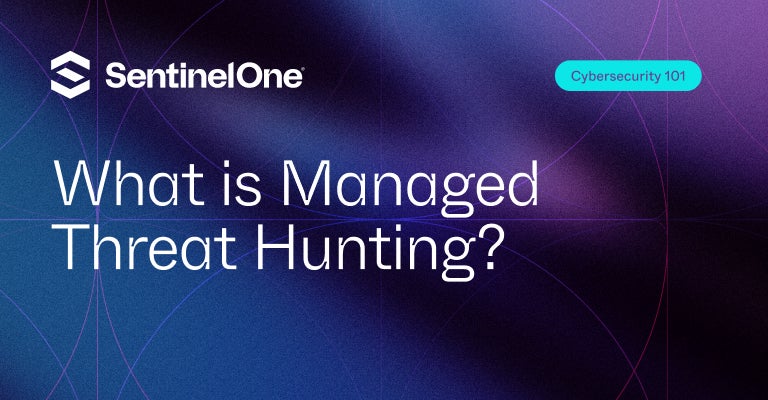Managed Threat Hunting involves proactive searching for cyber threats within an organization’s environment. This guide explores the principles of threat hunting, its benefits, and how it enhances security.
Learn about the methodologies used in managed threat hunting and best practices for implementation. Understanding managed threat hunting is essential for organizations looking to strengthen their cybersecurity posture.

What is Managed Threat Hunting?
Managed threat hunting is a proactive cybersecurity strategy involving proactively identifying and mitigating potential threats. It is a collaborative effort between an organization and a team of cybersecurity experts who use specialized tools and techniques to detect, investigate, and mitigate threats. This approach differs from traditional cybersecurity measures, which typically rely on reactive responses to incidents.
How Does Managed Threat Hunting Work?
Managed threat hunting works by combining advanced technologies and human expertise to detect, investigate, and mitigate potential threats. The process typically involves four main stages:
- Planning - In this stage, the managed threat-hunting team works with the organization to identify the assets that need protection and the potential threats they may face. The team also identifies the tools and techniques that will be used to detect, investigate, and mitigate threats.
- Detection - In this stage, the team uses advanced threat detection tools and techniques to monitor the organization's network and systems for suspicious activity. The team uses various methods, such as behavioral analysis, AI-based detection, and anomaly detection, to identify potential threats.
- Investigation - Once a potential threat has been detected, the managed threat hunting team investigates the incident to determine the extent of the threat and its potential impact on the organization. The team uses various techniques, such as memory and disk analysis, network forensics, and malware analysis to gather data and evidence.
- Response - After the investigation, the managed threat hunting team takes the necessary measures to mitigate the threat. This may involve isolating the affected systems, removing the malware, and patching any vulnerabilities.
Managed Threat Hunting vs. Traditional Cybersecurity Measures
Managed threat hunting differs from traditional cybersecurity measures in several ways. Traditional cybersecurity measures typically rely on reactive responses to incidents, which can be costly and time-consuming. Managed threat hunting, on the other hand, takes a proactive approach to cybersecurity, identifying and mitigating potential threats before they cause significant harm. Managed threat hunting relies on advanced technologies and human expertise to detect and mitigate threats, whereas traditional cybersecurity measures typically rely on automated tools.
MDR You Can Trust
Get reliable end-to-end coverage and greater peace of mind with Singularity MDR from SentinelOne.
Get in TouchSentinelOne's Vigilance Managed Threat Hunting Service
SentinelOne's Vigilance is a managed threat hunting service that proactively monitors and responds to potential cyber threats. It involves a team of cybersecurity experts using advanced threat detection tools and techniques to monitor an organization's network and systems for suspicious activity. The Vigilance team works closely with the organization to identify potential threats, investigate them, and take the necessary measures to mitigate them.
Vigilance uses advanced technologies such as SentinelOne's Endpoint Protection Platform to monitor the organization's network and systems for suspicious activity. The team also uses techniques such as memory and disk analysis, network forensics, and malware analysis to investigate potential threats. Once a potential threat has been identified, the Vigilance team takes the necessary measures to mitigate the threat. This may involve isolating the affected systems, removing the malware, and patching any vulnerabilities. The team also provides recommendations to the organization to prevent future incidents.
Benefits of SentinelOne's Vigilance Managed Threat Hunting Service
SentinelOne's Vigilance offers several benefits to organizations, including:
- Proactive Approach - Vigilance allows organizations to take a proactive approach to cybersecurity by identifying and mitigating potential threats before they cause significant harm.
- Early Detection - Vigilance allows for early detection of threats, which helps organizations to respond quickly and mitigate the impact of an attack.
- Expertise - The Vigilance team comprises cybersecurity experts with the necessary skills and experience to detect and mitigate threats. The team also has access to SentinelOne's advanced threat detection tools, enabling them to quickly identify and respond to threats.
- Cost-Effective - Vigilance is a cost-effective way of managing cybersecurity. It allows organizations to identify and mitigate threats before they cause significant harm, which can save them the costs associated with a cyber attack.
External Links
To learn more about managed threat hunting, check out the following external links:
- The National Institute of Standards and Technology's (NIST) Guide to Cyber Threat Hunting: https://nvlpubs.nist.gov/nistpubs/specialpublications/nist.sp.800-150.pdf
- The Cybersecurity and Infrastructure Security Agency's (CISA) Managed Threat Services page: https://www.cisa.gov/news-events/cybersecurity-advisories/aa22-131a
Internal Links
To learn more about SentinelOne's Vigilance managed threat hunting service, check out the following internal links:
- SentinelOne's Vigilance page
- SentinelOne's Endpoint Protection Platform page
- What is Threat Hunting?
- SentinelOne's Services page
- SentinelOne's blog post on the benefits of managed Detection and Response.
Conclusion
Managed threat hunting is a proactive approach to cybersecurity that can help organizations to identify and mitigate potential threats before they cause significant harm. It involves a collaborative effort between an organization and a team of cybersecurity experts who use specialized tools and techniques to detect, investigate, and mitigate threats. SentinelOne's Vigilance-managed threat hunting service offers a proactive and advanced approach to cybersecurity, providing organizations with the necessary expertise, tools, and technologies to detect and mitigate potential threats. By adopting managed threat-hunting strategies and leveraging advanced technologies, organizations can protect themselves from ever-increasing cybersecurity threats and ensure the safety of their systems and data.
Managed Threat Hunting FAQs
Managed threat hunting is a proactive security service where experts actively search for hidden threats inside your environment. They analyze logs, network traffic, and endpoint data to find attackers who may have bypassed automated defenses. This service combines human expertise with advanced tools to detect stealthy or evolving cyber threats before they cause damage.
Yes, managed threat hunting often comes as part of Managed Detection and Response (MDR) services. MDR includes continuous monitoring, alert investigation, and active threat hunting by security analysts. Together, they provide faster detection and response to sophisticated attacks that automated systems alone might miss.
Threat hunters use behavioral analytics, pattern recognition, and anomaly detection on endpoint and network data. They look beyond known malware signatures and indicators of compromise, searching for suspicious activity like unusual login times, privilege escalations, or data exfiltration attempts. Their expertise lets them connect subtle clues into a bigger attack picture.
Most managed threat hunting services run around the clock. Continuous monitoring ensures no time gaps in threat detection. Overnight or weekend activity doesn’t go unchecked, and analysts can act quickly on any signs of compromise to contain threats before they escalate.
Yes, by focusing on anomalous behaviors and unusual patterns, threat hunters can spot attacks without relying on signature-based detection. This helps catch zero-day exploits, fileless malware, and insider misuse that evade traditional security tools. They dig deeper into telemetry to uncover hidden threats.
Full visibility across endpoints, network traffic, cloud workloads, and identity systems is essential. Access to logs, process details, user activities, and network flows allows hunters to correlate events and identify suspicious behavior. Without comprehensive data, early signs of attacks may be missed.
No. While IOCs help, threat hunting also looks for unknown or emerging threats by analyzing unusual activities or deviations from normal baselines. Hunters hunt proactively—searching for hidden attackers who purposely avoid known IOCs or use novel tactics.
Managed hunting services typically offer dashboards highlighting active threats, investigation statuses, and remediation progress. Reports summarize findings, trends over time, and recommendations for improving defenses. These insights help security teams prioritize actions and measure the hunting program’s value.
Track mean time to detect (MTTD) and mean time to respond (MTTR) to measure speed in finding and stopping threats. Monitor the number of confirmed threats and their severity. Also watch false positive rates and hunter productivity metrics. These show how well hunting improves security and supports operational goals.


